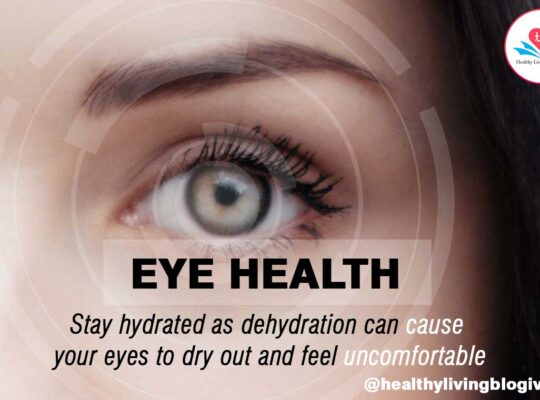Eyestrain, also known as eye fatigue or asthenopia, is a common condition that occurs when the eyes are subjected to prolonged and intense use. This can happen when engaging in activities such as reading books for extended periods, spending long hours staring at computer or digital screens, driving long distances, or performing tasks that require sustained eye focus.
Eyestrain can be bothersome, causing symptoms such as sore or dry eyes, blurred vision, and headaches. It may also lead to difficulty concentrating and increased sensitivity to light. However, it is important to note that while eyestrain can be uncomfortable, it is usually not a serious issue and can be relieved with simple practices.
Taking regular breaks during activities that strain the eyes, such as looking away from the screen every 20 minutes or so, can help reduce eyestrain. Additionally, adjusting the lighting conditions and ensuring proper ergonomics while working on computers or reading can make a difference. Using good visual habits like blinking frequently, practicing the 20-20-20 rule (looking at something 20 feet away for 20 seconds every 20 minutes), and maintaining a healthy overall lifestyle with adequate sleep and hydration can also contribute to preventing or reducing eyestrain.
If symptoms persist or worsen, it is advisable to consult an eye care professional who can provide further guidance and recommend appropriate measures to alleviate the discomfort. Remember, caring for your eyes is essential to maintain optimal visual health and prevent unnecessary strain.
Symptoms of Eyestrain:
- Red, tired, or burning eyes
- Watery eyes
- Dry eyes
- Blurred or double vision
- Mild Headache
- Increased sensitivity to light
- Difficulty concentrating
- Inability to open eyes properly
Causes of Eyestrain:
Eyestrain, also known as asthenopia, can be caused by various factors. Here are some specific causes that can contribute to eyestrain:
- Long distance driving: Focusing on the road for extended periods, especially in challenging driving conditions, can strain your eyes.
- Doing detailed work in dim light: Engaging in activities such as sewing, crafting, reading, or writing in poor lighting conditions can put additional strain on your eyes as they work harder to focus.
- Being exposed to bright light or glare: Excessive exposure to bright light or glare, whether from sunlight or artificial sources, can strain your eyes and cause discomfort.
- Being stressed or fatigued: Mental stress and fatigue can manifest physically, and your eyes are no exception. Stress and fatigue can cause your eye muscles to tense up, leading to eyestrain.
- Experiencing poor vision or eye problems like dry eyes: Pre-existing eye conditions, such as nearsightedness, farsightedness, or dry eyes, can make your eyes more susceptible to strain.
- Staring at digital screens for long hours: Prolonged use of electronic devices like computers, smartphones, or tablets can lead to digital eye strain. The combination of focusing on close-up work and exposure to blue light emitted by these screens can contribute to eyestrain.
It’s essential to be mindful of these causes and take necessary precautions to minimize eyestrain, such as taking regular breaks, adjusting lighting conditions, using proper eye protection, and seeking vision correction if needed.
Steps to Relief Eyestrain:
Here are some helpful tips to reduce eyestrain:
- Take regular breaks: Eyestrain tends to go away when you give your eyes a rest. Make it a habit to take regular breaks from prolonged periods of screen time or other visually demanding activities.
- Divide your time: Instead of spending a long time on a single activity, try to break it up into shorter sessions. Taking occasional breaks not only rests your eyes but also helps prevent eye fatigue.
- Use lubricating eye drops: To reduce discomfort, consider using lubricating eye drops frequently. They can help soothe dryness and provide relief from eye strain.
- Maintain the right distance and position: Ensure that you are looking at your digital device from the correct distance and in the proper position. Position your screen at eye level, about 20 inches away from your face, and adjust the brightness and contrast settings for optimal viewing.
- Find the right lighting: Dim lighting can contribute to eyestrain, so it’s important to have an eye-pleasing light source in your work environment. If possible, use natural or indirect lighting, and avoid glare on your screen.
- Follow the 20-20-20 rule: Every 20 minutes, take a break and look at something about 20 feet away for 20 seconds. This exercise helps to relieve eye strain by giving your eyes a chance to focus on objects in the distance.
- Take frequent eye breaks: Every 2 hours, take a break of 10-15 minutes from digital screens. During this time, blink your eyes frequently to moisten them and prevent dryness.
- Wear eye-protective glasses: When using electronic devices like computers or mobile phones, consider wearing eye-protective glasses. These glasses can help filter out harmful blue light and reduce eye strain caused by prolonged screen time.
- Check the air quality: Dry or polluted environments, as well as places with fans and heating and cooling units, can contribute to eyestrain. Consider using a humidifier to add moisture to the air and create a more comfortable environment for your eyes.
Remember, these tips are general recommendations and may vary depending on individual circumstances. If you experience persistent eye strain or discomfort, it’s always best to consult with an eye care professional.







